The Analysis: Outside The Box, Outside The Business
As a company built on innovation to meet customer expectations and market demands, LEGO first responded to financial crisis by inventing new products, hoping that they would lead to new opportunities. LEGO collaborated with production companies behind famous movies and characters such as Star Wars and Harry Potter to create new bricks that children would buy based on their passion for the movies rather than for LEGO itself.
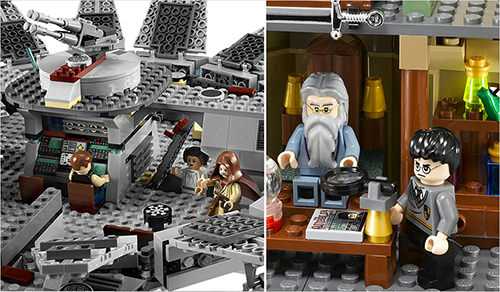 LEGO Star Wars and Harry Potter (Image: Lego)
LEGO Star Wars and Harry Potter (Image: Lego)
Some of these products, such as Star Wars, did well in the market and appeared to be saving the company from sinking, while other products were a big failure, such as Galidor. While this innovative thinking might have appealed to LEGO at the time, it had two main pitfalls:
- The new products were not actually solving the company’s problem because they were focusing on consumer passion for other movies and characters, instead of LEGO products themselves.
- The themed products were a short-term success, because once a movie grew old, no one would buy the theme again.
As a result of venturing into these new innovative product areas, LEGO found itself outside the business while trying to get back on track. Furthermore, the new products diminished the market for consumers seeking original LEGO bricks.
These new products were one reason for the company’s second fall in 2003. Once sales for its two main themes, Star Wars and Harry Potter, started to fall, company sales went off another cliff.
The solution to the first drop highlighted another situation that needed to be studied. LEGO’s problem was not its innovation, but rather the connection between its innovation and its business goals. When innovation gets out of control, it disconnects from the company’s strategy, leaving a gap between business and creativity, leading to sales losses.
The Problem: LEGO’s Hard Times
Before 1993, LEGO had faced some general troubles with sales but did not experience any hard times, as sales and revenues continued to rise. After a catastrophic period between 1993 and 2004, sales grew again and reached £163 million in net profit in 2008, with sales increasing by 51% in the UK, with an increased market share of 2.2 to 3.3%.
The question is what really happened between 1993 and 2004 to cause sales and, subsequently, revenue to drop off a cliff? And what did LEGO do to retrieve its position in the market and, furthermore, to increase sales and revenue more than expected?
Between 1993 and 2004, two major problems collided. The first occurred between 1993 and 1998, when LEGO toys were already on every shelf and the company had reached its natural growth cycle. In order to keep growing, the company produced more products, but sales did not increase. Subsequently, costs went up and hindered profits (see “How LEGO Stopped Thinking Outside the Box and Innovated Inside the Brick”).
In response to this loss, the company laid off 1,000 employees, and Kjeld Kirk Kristiansen stepped aside, saying, “Maybe I’m not the right person to lead this company in the next generation.”
The new president for the company, Poul Plougmaan, understood that the company was operating very differently than before. After analyzing the market and its consumers, he discovered that kids were continually getting smarter. Added to this, new competitors had entered the market, such as Toys “R” Us and Walmart, with powerful strengths. And many toymakers had moved their production to China in order to decrease manufacturing costs.
Зачем оцифровывать школы
В стратегии перечислено несколько проблем, которые можно решить за счёт цифровой трансформации:
Некачественный и неверифицированный образовательный контент. Бумажные учебники в школы закупает государство, и в стратегии говорится о том, что это большие затраты. В то же время в официальном федеральном перечне учебников, по мнению разработчиков стратегии, много лишнего: встречаются даже экземпляры с фейковыми информационными блоками, с помощью которых создаётся «идеологический подрыв» (цитата из паспорта стратегии). Что касается цифрового образовательного контента, то он сейчас существует на разрозненных платформах, нет единой точки сборки, где размещались бы все верифицированные властями и соответствующие стандартам учебные материалы.

Фото: ESB Professional / Shutterstock
Риски кражи персональных данных учителей, учеников и их родителей. Угрозу кибербезопасности создаёт всё тот же разброс цифровых систем: пользователям приходится регистрироваться на множестве разных платформ, и не все из них хорошо защищены. Кроме того, в стратегии отмечается, что возможности цифровых инструментов дискредитируют «фейковые образовательные порталы — множественные онлайн-школы».
Большие временные затраты педагогов на ручной ввод информации в различные системы и проблемы с качеством этих данных. «До четырёх часов в день тратят в среднем учителя на заполнение различных отчётов, большая часть которых не связана ни с учебным предметом, ни с классным руководством», — утверждается в стратегии. Ресурсов и стимулов, чтобы выверять эту информацию, у педагогов нет, интеграции между разными информационными системами — тоже. Такие данные не могут быть достойной базой для управленческих решений.
Ограниченность и непрозрачность «аналоговых» форматов обучения. Даже за обычный тест с выбором ответа ученик получает оценку только после того, как учитель проверит его вручную. Нагрузка на педагогов огромная, а обратную связь при этом нельзя назвать оперативной. К тому же бумажные учебные материалы сложнее адаптировать для детей, у которых есть проблемы со здоровьем. В стратегии указано ещё одно ограничение — бумажные форматы не дают учителям, родителям и самим ученикам такого количества объективных данных тестирования и результатов для наполнения портфолио, как цифровые.
Интернет и гаджеты для детей — средство развлечения, но не обучения
Цифровые продукты конкурируют со школой за внимание учеников, и их возможности не используются в процессе обучения. Кроме того, родители и ученики зачастую не знают, где в интернете найти полезные конкурсы, записаться на курсы, получить цифровой сертификат на дополнительное образование.
Every respectable company should understand the significance of having company culture; having a company vision, values, beliefs and habits.
A good company culture would benefit the company with its employee participation and employee engagement, motivating employees at their workplace. Yet there are companies who do not have any company culture or think it is unnecessary as their company is too small.
Not every company is blessed with the anticipation to come up with a long-term plan for their company growth and culture. There would be a few exceptions with some companies that do this, only because it demands a certain confidence in the company’s long-term survival.
To encourage companies to come up or improve on their company culture, we will look into The LEGO Group company culture example, and how they build and maintain their unique culture and values.
The LEGO Group
The LEGO Group began in the workshop of Ole Kirk Christiansen, a carpenter from Billund, Denmark. It was in 1932 that he began making wooden toys for children. In 1934, his company was renamed as “Lego”, from the Danish phrase leg godt, which means “play well”. LEGO have been a common household name since the early 60s.
It is the LEGO philosophy that ‘good quality play’ enriches a child’s life and lays the foundation for later adult life. They brought joy to children and encouraging them and even adults in creativity and thinking out of the box. Here is a brief animated movie on The LEGO Group:
The LEGO Group Culture – LEGO People Promise
LEGO has a purpose; to inspire and develop children to think creatively, reason systematically and release their potential to shape their own future. Their corporate culture is based on openness, trust their company’s core values; Creativity, Imagination, Fun, Learning, Quality & Care, which are reflected in everything they do.
The role of the LEGO People Promise is to enable execution of the business strategy and build the long-term health of the company. It defines why people should choose and commit the best they can to the company. According to their website, there are four pillars that determine the LEGO employees:
Purpose Driven: Experience the pride, commitment and shared sense of responsibility to deliver our mission
Systematic Creativity: Combine your experience and imagination to find the best solutions – now and in the future
Clutch Power: Feel part of a family and collaborate across the global LEGO community
Action Ability: Be accountable, deliver what you promise and unlock your talent in the best interest of the company
A Strong and Creative Corporate Culture
The LEGO Group was built on the Danish values of hard work, humility and teamwork and its heritage remains a fundamental part of the LEGO corporate culture, despite reaching international recognition. In an interview video on the LEGO Group website, CEO Jørgen Vig Knudstorp quoted something George Bernard Shaw once said “We don’t stop playing because we grow old; we grow old because we stop playing.” It is clear that this is one company that takes play seriously.
The LEGO Group welcomes children to their workplace for guided LEGO site tours and co-creation events. Their open-plan studio of the company’s design and development studio is always bursts with activity.
Team boundaries are defined by bold banners and enormous brick sculptures, while designers express their individuality through collected objects and imagery on display in their workspaces. It takes a lot of dedication to understanding the power of play that has enabled the company to continue find new ways of connecting with both children and adults through their basic product.
Jørgen Vig Knudstorp believes that a strong company culture means not having to look into a manual or having a rule book but having an intuitive sense on how to do things; a problem does not have one solution to the same problem but having many solutions to the same problem.
LEGO started out as a small workshop that over time and hard work, grew multi-million company with related products such as video games, theme parks and even films and television shows. They were recently named “World’s most powerful brand” by Forbes in February 2015, replacing Ferrari Motors off its chart.

Photo: Sonny Abesamis, Flickr
In Summary
We learnt from this company culture example, that no matter how small a company may be, even if it a start-up, a company is built upon its culture; like how LEGO was built on the Danish values of hard work, humility and teamwork.
Despite how successful your company has grown, always remember the culture that you have created is a heritage that remains an essential part of the company.
Good luck in building a similar company culture!
Лидеры цифровой трансформации
Наиболее цифровизированы в России компании из сферы b2c, то есть, работающие с потребителями напрямую — во многом, за счет быстрой адаптации к постоянно меняющимся требованиям клиентов на широком рынке. На их фоне b2b-компании переходят в цифровую среду медленнее, но большая часть из них уже уже адаптируется к новой реальности.
- Банковский сектор (3,4 балла из 5 возможных) лучше других компаний адаптирует цифровые технологии. Это связано с высокой долей онлайна в бизнесе. Тем не менее, из-за высокой бизнес-критичности систем банкам сложно быстро внедрять новые проекты.
- Пандемия подтолкнула к переходу в онлайн и компании из сферы торговли (2,6 балла) — в том числе для поиска новых каналов взаимодействия с клиентами и удовлетворения их потребностей. Однако авторы доклада отмечают, что потенциал для дополнительной цифровизации еще не исчерпан: бизнес может перевести в онлайн сложные цепочки поставок, характерные для торговых компаний.
- Телекоммуникационная отрасль (2,6 балла) трансформируется сразу в нескольких направлениях, что объясняется высоким влиянием технологий на бизнес. А необходимость работать с большими объемами данных клиентов подталкивает телекоммуникационные компании развивать онлайн-аналитику.
Low-Risk Experimentation
Five years ago, LEGO wouldn’t have launched any “risky” products that could smear the brand’s reputation for quality. But that’s precisely why Knudstorp created Future Lab – so mistakes can be made relatively cheaply and vast amounts can be learned.
For example, LEGO Universe, an online game that resembled World of Warcraft, was discontinued just over a year after its launch in 2012 as they weren’t able to build a satisfactory revenue model. The experiment barely damaged LEGO’s reputation whilst providing multiple key insights and learning lessons to establish the company in the digital world.
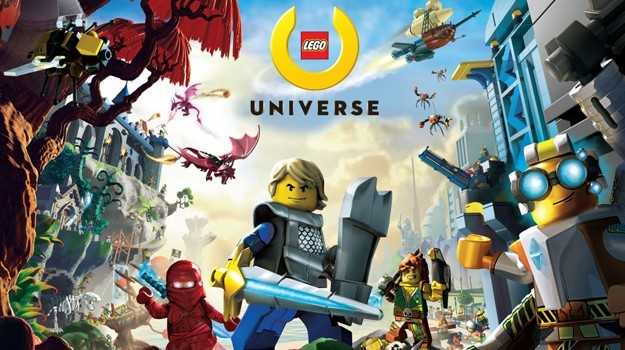 Welcome to the LEGO Universe | image source: LEGO Group
Welcome to the LEGO Universe | image source: LEGO Group
In 2014, LEGO quietly debuted a Future Lab pilot project called LEGO Fusion, limited to North American Toys «R» Us stores and LEGO’s own retail outlets. The play experience is similar for each LEGO Fusion set —you build a model of a house or castle, take a photo of it with a tablet, and watch your creation become part of a virtual world inside an accompanying app.
Kids and parents seem intrigued, but Fusion was at best “a 1.0 version of a digital-physical play experience”. The value in this project is not commercial, but in the insights and learning lessons that will inform the development of much cooler Fusion-style toys.
 LEGO Portal Racers Mod Shop | image source: Intel RealSense
LEGO Portal Racers Mod Shop | image source: Intel RealSense
In February 2015, LEGO launched a new game – LEGO Portal Racers – in partnership with augmented reality company Metaio. The game uses an Intel RealSense camera and depth technology to allow users to play without using their hands, instead of using head movements to steer left or right.
The original idea was to have kids build their own vehicles out of bricks and scan them into the game, but it remains a digital-only experience for the time being. Like LEGO Fusion, it is a means for Future Lab to understand and experiment with new technologies.
Few businesses have mastered the digital/physical experience but LEGO’s ability to experiment quickly, cheaply and under the radar means it can continue to evolve, discover new forms of play, and delight its fans.
So what can we learn from the ups and downs of innovation at LEGO?
- Innovation without direction is risky.
- Innovate close-to-the-core first.
- To experiment and test ideas in a safe way, without damaging your brand reputation, start with small projects and small budgets, then test, learn and prove.
- Disrupt yourself – build the next big thing before a competitor does.
- Foster open innovation and listen to the wisdom of your customers.
- Build an innovation culture that gives people freedom to be creative, as well as the direction and focus needed to deliver profitable innovation.
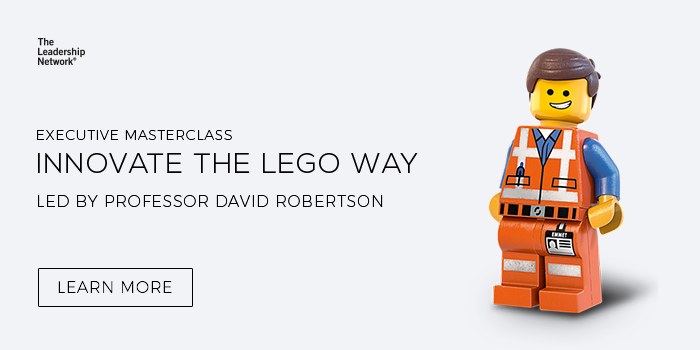
Sources & Citations
- How Lego Become the Apply of Toys, Fast Company — https://www.fastcompany.com/3040223/when-it-clicks-it-clicks
- From Bankruptcy to Industry Leading Success – The LEGO Story, InnovationManagement.se — http://www.innovationmanagement.se/2016/07/11/from-bankruptcy-to-industry-leading-success-the-lego-story/
- Lego: How toy company’s failures led to success — http://www.nzherald.co.nz/business/news/article.cfm?c_id=3&objectid=11706753
Какие перспективы открывает для компаний цифровая трансформация?
В повседневной жизни мы уже пользуемся огромным количеством сервисов и продуктов, появившихся благодаря цифровой трансформации. Мы часто перестаем замечать это. Многим кажется, что эти сервисы были всегда. Люди стремятся пользоваться всеми преимуществами, сервисами и продуктами, которые дает цифровая трансформация, потому что это удобно, доступно и выгодно.
Значение цифровой трансформации для бизнеса сложно переоценить. Инвестиции в цифровые трансформации в масштабах отраслей — огромны. Достаточно посмотреть на рейтинги компаний из S&P500 — сколько компаний не из цифрового мира остаются там долгое время?
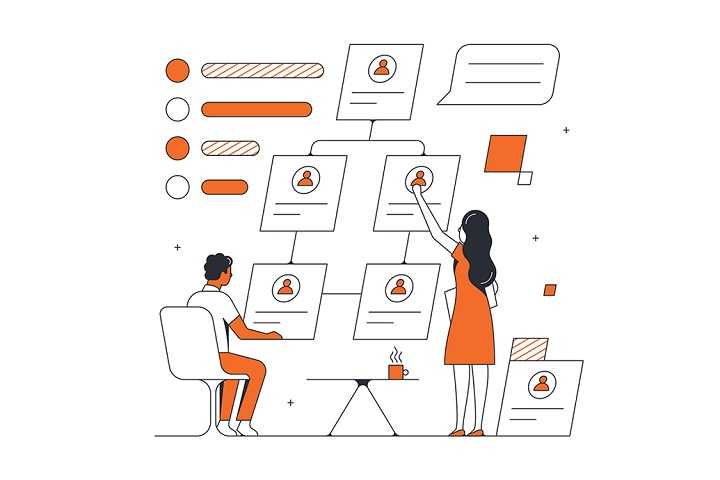 Изображение: lucidchart.com
Изображение: lucidchart.com
Мы видим, что компании-гиганты создают базу и возможности для цифровой трансформации — например, сервисы Google, Microsoft, разнообразные продукты других поставщиков. Мы можем ими пользоваться, создавать свой цифровой продукт или цифровой актив и использовать его для продвижения своего физического продукта или услуги. А можем не пользоваться, но тогда это сделает кто-то другой.
Это как отрицать полезность электричества в конце XIX века и не пользоваться им. Остается собрать все компоненты в единую систему, обеспечить ее сервисом и сделать основой бизнеса.
Rebuilding LEGO Through “In the Box” Innovation
Taking over the helm in 2004 with the firing of Poulmann by the family owners, 30 something Jorgen Vig Knudstorp focused on stripping the complexity out of the business (reduce components and time-to-market for new products), making retailers their primary concern, and selling off assets like LEGOLAND theme parks.
By aligning LEGO back to “brick” and “play system”, Knudstorp brought back DUPLO. He also restored traditional crowd favourite LEGO City.
Instilling greater discipline and focus in LEGO’s creative processes, Knudstorp’s “Shared Vision” covered three key phases:
- Stabilising the company through a “turnaround” phase (2004-2005);
- Building a strong core business for its “business transformation” phase (2006-2008); and
- Growing it organically through its “brand revitalisation” phase (2009 and beyond).
Over the next few years, Knudstorp’s team aligned itself along the following areas.
#1 Greater customer focus
Becoming more customer driven, LEGO started to engage directly with customers. Their key targets were the hardcore LEGO geeks who are mostly adults and kids between the ages of five to nine.
Discarding their cold and aloof nature, LEGO senior managers mingled with fans in LEGO communities and events like BrickFest.
#2 Embrace full spectrum of innovation
Exploring the full spectrum of innovation, LEGO created Bionicle – the toy which literally saved the business. Bionicle compelled LEGO to expand innovation processes beyond product innovation to include communication, business and process innovations.
#3 Foster open innovation
Fostering open innovation by co-opting a close clique of alpha LEGO geek fans, LEGO co-developed the highly successful Mindstorms NXT robot toys. This was followed by working with Chicago-based architect Adam Reed Tucker – a master builder – to develop the premium LEGO Architecture line of minimalist building toys.
#4 Enter Blue Ocean markets
Opening up Blue Ocean Markets, LEGO invented what is known as LEGO Games. This unique product is quintessentially LEGO as it is buildable, changeable, and rebuildable. At the same time, it incorporated the latest use of technology.
#5 Leverage diverse and creative workforce
Finally, LEGO tapped on the its diverse and creative workforce to create Ninjago. The group’s “Big Bang” toy line was developed through a new team-based innovation process. This involved entailed greater staff empowerment, closer co-creation with kids, and greater flexibility and time for exploration and imagination.
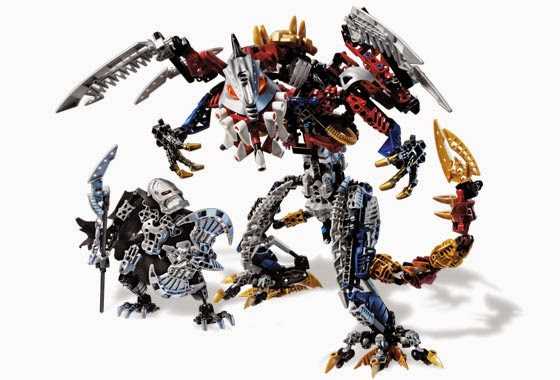 Bionicle – the “ugly” toy which saved LEGO’s ass (courtesy of Bionicle Comics)
Bionicle – the “ugly” toy which saved LEGO’s ass (courtesy of Bionicle Comics)
Споры вокруг бренда
Мало кто знает, но впервые подобные леговским игрушки из пластика появились благодаря британскому изобретателю Хилари «Гарри» Фишер Пейдж — в 1930-х годах он осознал удобство и большой потенциал в небольших самоблокирующихся пластиковых фигурках, с помощью которых можно без труда сделать абсолютно любую форму, а затем основал игрушечную компанию Kiddicraft. При этом изобретатель не запатентовал свой продукт.
Еще одна история, но уже дошедшая до судебного иска, произошла с компанией Best-Lock, производившей недорогие пластиковые кубики-конструкторы, совместимые с LEGO.
Дело в том, что для конструктора LEGO стал судьбоносным 1978 год, когда впервые появились классические наборы с человечками с различными лицами, а также подвижными руками, ногами и головой. Компания-конкурент всемирно известного бренда объясняла свою позицию тем, что главной технической характеристикой фигурок человечков конструктора является их форма. Также утверждалось, что «эти фигурки — не более чем кубики конструктора», то есть они первоначально выполняют именно техническую функцию в силу имеющихся в фигурках пазов, соединяющих их с другими деталями Lego. Однако эти технические решения уже были защищены патентом, который компания получила в далеких 1970-х, чей срок давности, соответственно, давно истек.
Но датский бренд зарегистрировал объемные фигурки людей в качестве товарного знака в 2000 году, поэтому Европейский суд общей юрисдикции отклонил протест компании Best-Lock и постановил, что фигурки в виде людей из конструктора LEGO являются защищенным товарным знаком и не могут копироваться конкурирующими производителями.
Суд решил, что руки, голова, туловище и ноги не могут использоваться для крепления их к другим материалам, а значит они не выполняют никакой технической функции, являясь по большей мере эстетичным дополнением к набору.
Не менее ярким сражением был случай в Европейском суде, о котором написала DW: «LEGO выиграла патент на дизайн в деле против немецкой компании в суде ЕС», — говорится в заголовке. Генеральный суд Европейского союза, второй по величине, отменил решение Управления интеллектуальной собственности Европейского союза (EUIPO) от 2019 года, постановив, что конструкция строительных блоков датского гиганта по производству игрушек LEGO защищена патентом, в отличие от компании Delta Sport.
Решение приняли почти сразу после того, как датская компания подала апелляцию на решение EUIPO, и судьи написали: «EUIPO ошибочно объявил недействительным конструкцию кубика игрушечного конструктора LEGO. EUIPO не проверил актуальность применения исключения, на которое ссылалась LEGO, и не смог учитывать все особенности внешнего вида кирпича».
Решение суда означало, что EUIPO должен пересмотреть положение об исключениях, в котором говорится, что «составные части», демонстрирующие «инновационные особенности», которые являются «основным маркетинговым фактором», могут быть защищены, даже если они носят сугубо технический характер.
Этап 2. Разрозненность
Отдельные подразделения компании могут начать использовать технологии для создания новых бизнес-моделей. Например, производственная функция бизнеса достигла прогресса в использовании «интернета вещей»; или финансовый директор решил изменить способ ведения бухгалтерского учета между компаниями в разных странах, используя блокчейн; или отдел продаж стал продавать продукцию предприятия напрямую потребителю, а не через ритейлеров. Все эти новшества пока не дадут ощутимых результатов: нет общей стратегии компании, способствующей цифровой трансформации.
Дмитрий Кириллов, президент VR/AR-компании Modum Lab
«Отдельные IT-решения не являются “волшебной пилюлей”, которая сможет в один миг “вылечить” компанию от всех “болезней”. К внедрению инноваций должен быть комплексный и проработанный подход. Инвестиции в IT-решения оправдываются только при проведении предварительной аналитики, расчете окупаемости. Эффективное использование функционала инновационных продуктов также подразумевает наличие нужных людей, готовых к принятию цифровой трансформации, выстроенных процессов и партнерских отношений. Зачастую действия, предпринятые бизнесом, то есть стратегии, процессы, отношения и поведение внутри организации, являются решающими для достижения успеха в процессе внедрения технологичных продуктов».
Прочитайте эти материалы, чтобы понять, как достичь наибольшей эффективности на этом этапе:
Машинное обучение и большие данные
- Как внедрить машинное обучение и повысить количество откликов на вакансии на 5 миллионов: кейс HeadHunter
- Мы оптимизируем бизнес-процессы с помощью ML уже почти 2 года. Каких результатов удалось достичь?
- Четыре чат-бота сделали клиентов довольными на 94%. Кейс сети автосервисов
- Год назад мы внедрили робота в HR-процессы. Какие у него плюсы и минусы?
- Как повысить продажи в три раза с помощью Big Data и машинного обучения?
- Анализ больших данных помогает нам выявлять «сомнительных» клиентов. И вот как
- Мы научились предсказывать поведение клиентов. Такой способ может увеличить ваш доход в два раза
- Большие данные помогли нам выстроить эффективное взаимодействие с клиентами и повысить продажи. И вот как
- Эти способы помогают нам проверять надежность подрядчиков. Они могут подойти и вам
- Как имитационные модели помогают выстроить систему логистики: кейс Ozon
- Как цифровые двойники помогают российской промышленности
Блокчейн
- Блокчейн может изменить рынки образования и рекрутмента. И вот как
- Зачем корпорации перехватывают блокчейн-инициативу у стартапов?
AR и 3D
- Как мы делали 3D-контент в недвижке: сколько это стоит и какие результаты дает
- Уже реальность: как российский бизнес использует AR-технологии
- Индустриальный AR: как корпорации используют дополненную реальность
И другие технологии
- Цифровизация HR: как не разочароваться в новых технологиях
- Почему вам будет сложно внедрить в компании HR-технологии (и как это преодолеть)
- Эти правила помогут создать эффективную службу доставки: кейс Lamoda
- Точное предложение и дружественные интерфейсы: как мы персонализируем общение с клиентами
- Как повысить продажи в e-commerce — пять проверенных способов
The Solution: Relinking Creativity And Business
The short answer to how LEGO solved its market problem was simply by thinking inside the box again. It returned to its ordinary brick themes, such as racing cars, police stations and schools. These products allowed children to reuse the bricks again and again. Buying a new brick set would actually add to the previous one. This is one of LEGO’s key marketing strengths and something consumers really want.
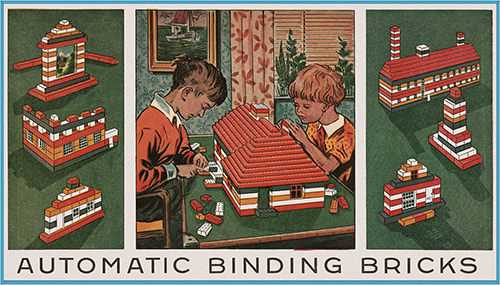 LEGO overcame the crisis by returning to the original bricks. (Image: Brick Fetish)
LEGO overcame the crisis by returning to the original bricks. (Image: Brick Fetish)
Behind this conclusion were new innovations in the process itself. Unlike many companies that lock creativity inside the thinking room, LEGO strongly believes in expressing creativity not only in its products but in its production process. To understand how creativity and innovation helped to solve LEGO’s problem, we need to learn more about the role of design strategy in LEGO’s manufacturing process.
Design For Business
LEGO is one of the few companies that has had a clear vision of the role of creativity within its organization. LEGO developed a design process model known as “Design for Business” (D4B) to ensure the continual linkage between innovation and its business plan. D4B also shifts the strategy for innovation from being product-focused to being company-focused.
D4B focuses on defining creativity and design within an organizational strategy. For example, it links the company’s objectives and design strategy in order to achieve these corporate goals. Also, D4B provides for more collaboration between teams to improve the innovation process. It required a number of processes and tools to ensure that innovation was better presented and discussed. According to Design Management Europe’s award poster for LEGO, these tools and methods are divided into being innovation-related and design-related — understandable given that design is the roadmap that turns creativity into innovation.
While the D4B model provided a unique management process, allowing for design and innovation to be more holistically integrated in the organization, a gap still existed between the marketing strategy and creative team. This gap was one of the causes of LEGO’s dramatic fall by the end of the 1990s. We can trace it back to the creative team thinking differently from the company’s initial vision.
LEGO’s Shared Vision
D4B was part of a seven-year strategy named “Shared Vision” established in 2004. The new vision was to rebuild the company’s brand identity as a creative toy-manufacturing enterprise. In this strategy, the marketing department was asked to provide a wider vision of innovation and creativity in the product development process. This vision ensures that both the creative side and business side share the same aims and fully understand LEGO’s business strategy and how to achieve strategic goals using the other team’s resources.
As mentioned, LEGO’s problem was not its creativity but in the disconnect between its creativity and corporate strategy. The business and creative teams were working in silos, each having authority to innovate on whatever it wanted. While LEGO struggled with this problem, many companies do not position design and creativity correctly within their business and strategy. Perhaps the problem was acute for LEGO because it is a creativity-based company.
The Shared Vision strategy is the link between business and creativity and puts the process of innovation in its correct place in the organization. It brought the creative team out of its silo and connected it to the company’s business goals, allowing it to create under the umbrella of a company-wide strategy. The move brought LEGO’s strategy back to life, with products that met both creativity and business needs.
Six Founding Principles
In its early days, LEGO was founded on six key principles initiated by Ole Kirk followed by his son Godtfred Christiansen.
These cardinal principles are as follows:
- Values are Priceless;
- Relentless Experimentation Begets Breakthrough Innovation;
- Not a Product but a System;
- Tighter Focus Leads to More Profitable Innovation;
- Make it Authentic; and
- First the Stores, Then the Kids.
These principles helped LEGO to grow many times over to hit 7.7 billion DKK (US$1.4 billion) in annual sales in 1998. However, these good times did not last forever. Falling profits led the family owners to hire Paul Poulmann in 1998 to help turnaround the company.
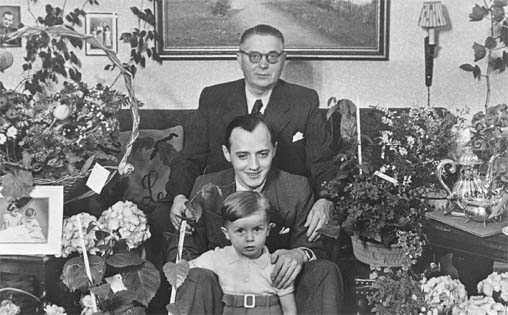 Three generations of the Kirk Christiansen family (courtesy of Brick Fetish)
Three generations of the Kirk Christiansen family (courtesy of Brick Fetish)
Seven Truths of Innovation
Faced with the challenge of doubling LEGO Group’s sales by 2005, Poulmann then adopted the 7 Truths of Innovation to transform the company.
They were:
- Hire diverse and creative people;
- Head for blue-ocean markets;
- Be customer driven;
- Practice disruptive innovation;
- Foster open innovation – heed the wisdom of the crowd;
- Explore the full spectrum of innovation; and
- Build an innovation culture.
While these truths sounded good on paper, the reality was that Poulmann’s “runaway innovation” approach led to chaos.
Buoyed by the runaway success of LEGO Star Wars and Harry Potter kits in 2001 and 2002, the Group recklessly pursued unfamiliar toy concepts like LEGO Explore, action figure Galidor, Jack Stone, and the LEGOLAND theme parks while eschewing traditional favourites like DUPLO. This resulted in the Group racking up losses of US$160 million in 2003 and a debt of US$800 million.
 Galidor – a dismal failure (courtesy of Brickipedia)
Galidor – a dismal failure (courtesy of Brickipedia)
Этапы подготовки цифровой трансформации

Этап 1. Планирование
Практическое проведение цифровой трансформации начинается со стратегического планирования. Нужно понимать, какие задачи должны быть решены, какие ресурсы потребуются, как внедрение цифровых инструментов и инноваций повлияет на корпоративную культуру в целом.
Дорожная карта цифровой трансформации создаётся за три основных шага:
Оценка положения.
Для начала нужно определить текущее состояние дел в компании — её корпоративную культуру, бизнес-процессы и операции, а также уровень компетенции сотрудников. Это позволит четко выявить болевые точки или возможности, которые как можно скорее необходимо соответственно устранить или использовать. А кроме того, сразу же отслеживать результаты, достигнутые в процессе выполнения плана цифровой трансформации.
Постановка целей.
После того как выявлены актуальные проблемы и проведена оценка ресурсов, можно приступать непосредственно к выработке стратегии. Для этого нужно оценить различные «цифровые» инструменты и выбрать области их применения. В качестве основных направлений цифровой трансформации может выступать как внешняя сфера — продукты и клиентский опыт, так и работа внутренних служб — IT и облачных сервисов.
Составление бюджета.
Цифровая трансформация — непрерывный процесс, который обычно требует существенных инвестиций в технологии
Крайне важно понимать, сколько ресурсов компания готова на это выделить. При этом, бюджет должен быть рассчитан с учётом всех направлений бизнеса, которые затронет цифровая трансформация. Именно так можно правильно структурировать стратегию перехода на цифровые технологии, выявляя приоритеты и устанавливая границы этого процесса.
Именно так можно правильно структурировать стратегию перехода на цифровые технологии, выявляя приоритеты и устанавливая границы этого процесса.
Этап 2. Обеспечение административным ресурсом
После определения цифровой стратегии бизнеса, нужно заручиться ее поддержкой у руководства. Понимание управленческим звеном всех нюансов предстоящего процесса и его последствий — один из главных признаков готовности компании к цифровой трансформации. Именно поэтому первые лица зачастую начинают принимать участие в цифровой трансформации еще на этапе составления ее стратегии, наряду с генеральным директором, CDO и ИТ-директором.
Этап 3. Выбор партнёров
Для успеха цифровой трансформации крайне важно правильно выбрать партнеров по производственной цепочке или стейкхолдеров. Надёжный партнёр сможет:. Надёжный партнёр сможет:
Надёжный партнёр сможет:
- предоставить ресурсы для трансформации;
- предложить консультационные услуги, которые помогут внедрить цифровые технологии;
- помочь определить правильное направление трансформации;
- поделиться успешными подходами и практиками.
Этап 4. Доведение плана до сотрудников
Чтобы создать условия для успешного прохождения цифровой трансформации в компании, нужно своевременно донести её ценность до персонала. Это обеспечит доверие к предстоящему процессу и его внутреннюю поддержку.
Убедитесь, что сотрудники получили ясную структурную схему и план перехода. К цифровой трансформации они должны быть подготовлены заранее.
Этап 5. Старт трансформации
Исполнение намеченной стратегии должно проходить на всех уровнях организации — от топ-менеджмента до рядового персонала
В процессе цифровой трансформации крайне важно сохранять фокус на поставленных бизнес-целях
Управлением «цифровыми» изменениями должны руководить кросс-функциональные рабочие группы, которые формируют CDO. В их состав могут входить профессионалы с различными компетенциями. Но прежде всего — специалисты по стратегическому маркетингу, HR-менеджменту и дизайну потребительского опыта.
Такие тактические команды возглавят изменение корпоративной культуры. Они создадут фундамент для успешного внедрения цифровой операционной модели в производственные цепочки компании.
Digital transformation in the retail industry
Retail is one of the most rapidly changing among other industries, implementing new technologies fast and adapting to market needs.
Digital transformation is in every sector of retail business: from supply chain digitalization, delivery, and back-office processes to data and information optimization, and front-end where customer expectations are driving transformations to provide the best customer experience.
Consumers expect shops to be at a distance of a finger tap, predict their desires and be fast in delivery.
In addition to the cloud and big data, analysts see a growing role of the Internet of Things in retail, mainly in digital signage and omnichannel customer experience:

Image source
Winning retailers focus on these essential customer expectations and transform their businesses to satisfy them.



























